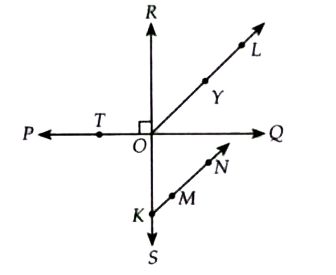Find pairs of parallel lines

AR, BX, AP, BY
AQ, BZ, AP, BX
AQ, BY, AP, BZ
AQ, BX, AR, BZ
The correct Answer is:C
Step by step video, text & image solution for Find pairs of parallel lines by Maths experts to help you in doubts & scoring excellent marks in Class 7 exams.
Updated on:21/07/2023Topper's Solved these Questions
- CIRCLES BOOK - S CHAND IIT JEE FOUNDATIONCHAPTER - CIRCLES EXERCISE - SELF ASSESSMENT SHEET
10 Videos
- AVERAGE BOOK - S CHAND IIT JEE FOUNDATIONCHAPTER - AVERAGE EXERCISE - UNIT TEST -3
20 Videos
- CIRCUMFERENCE AND AREA OF A CIRCLE BOOK - S CHAND IIT JEE FOUNDATIONCHAPTER - CIRCUMFERENCE AND AREA OF A CIRCLE EXERCISE - SELF ASSESSMENT SHEET - 22
10 Videos
Similar Questions
The eqution xy+yz=0 represents (A) a pair of straighat lines (B) a pair of parallel lines (C) a pair of parallel planes (D) a pair of perpendicular planes
View SolutionThe locus of xy+yz=0 is (A) a pair of straighat lines (B) a pair of parallel lines (C) a pair of parallel planes (D) none of these
View Solutionl and m are two parallel lines intersected by another pair of parallel lines p and q. Show that △ABC≅△CDA.
View Solutionl and m are two parallel lines intersected by another pair of parallel lines p and q as shown in figure. Show that ABC≅CDA.

View Solutionl and m are two parallel lines intersected by another pair of parallel lines p and q as shown in figure. Show that ABC≅CDA

View SolutionFrom Figure, name All pairs of parallel lines. all pairs of intersecting lines. lines of whose point of intersection in P lines whose point of intersection in C lines whose point of intersection in R Collinear points.
View Solutionl and m are two parallel lines intersected by another pair of parallel lines p and q (see Fig. 7.19). Show that ΔABC≅ΔCDA.

View SolutionABCD is a quadrilateral in which ∠A=60∘,∠B=70∘,∠C=110∘ and ∠D=120∘. The number of pairs of parallel lines is ________________.
View SolutionABCD is a quadrilateral in which ∠A=60∘,∠B=70∘,∠C=110∘ and ∠D=120∘. The number of pairs of parallel lines is ________________.
View SolutionLook at the figure and name the following:
 A pair of parallel lines
A pair of parallel lines
View Solution
